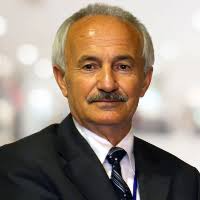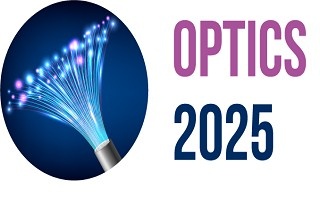Optics 2025

Firat University, Turkey
Abstract:
Shape memory
alloys take place in a class of advanced smart materials by exhibiting dual
memory characteristics, thermoelasticity and superelasticity. Thermoelasticity
is basically called shape memory effect and initiated with thermomechanical
processes on cooling and deformation and performed thermally on heating and
cooling, with which shape of material cycle between original and deformed shape
in reversible way.This property is
result of successive crystallographic transformations, thermal and stress
induced martensitic transformations. Thermal induced martensitic transformation
occurs on cooling with cooperative movements of atoms by means of lattice
invariant shears in <110 > -type directions on the {110} - type planes of
austenite matrix, along with lattice twinning, ordered parent phase structures
turn into the twinned martensite structures, and the twinned structures turn
into the detwinned structures by means of stress induced martensitic
transformation, with stressing material in the martensitic condition. Superelasticity
is performed by stressing and releasing material in elasticity limit at a
constant temperature in parent phase region, and shape recovery is performed
simultaneously upon releasing the applied stress. Superelasticity is also
result of stress induced martensitic transformation and ordered parent phase structures
turn into detwinned martensite structure with stressing in the parent phase
region.Copper based
alloys exhibit this property in metastable β-phase region, which has bcc-based
structures at high temperature parent phase field. Lattice invariant shear and twinning is not
uniform in copper based ternary alloys and gives rise to the formation of
complex layered structures. In the present
contribution, x-ray and electron diffraction studies were carried out on copper
based CuAlMn and CuZnAl alloys. X-ray diffraction profiles and electron
diffraction patterns exhibit super lattice reflections. X-ray diffractograms
taken in a long-time interval show that diffraction angles and intensities of
diffraction peaks change with the aging duration at room temperature. This result refers to the rearrangement of
atoms in diffusive manner.
It is important that diffraction, scattering, and
magnification events are result of photon-matter interaction with laser or
other lights in optical level. However, these events occur as photon-matter
with x-ray and electron light-matter interactions in quantum level.
Biography:
Dr. Adiguzel graduated from Department of Physics, Ankara University, Turkey in 1974 and received PhD- degree from Dicle University, Diyarbakir-Turkey. He has studied at Surrey University, Guildford, UK, as a post-doctoral research scientist in 1986-1987, and studied were focused on shape memory effect in shape memory alloys. He worked as research assistant, 1975-80, at Dicle University and shifted to Firat University, Elazig, Turkey in 1980. He became professor in 1996, and he has been retired on November 28, 2019, due to the age limit of 67, following academic life of 45 years. He supervised 5 PhD- theses and 3 M. Sc- theses and published over 80 papers in international and national journals; He joined over 120 conferences and symposia in international and national level as participant, invited speaker or keynote speaker with contributions of oral or poster. He served the program chair or conference chair/co-chair in some of these activities. In particular, he joined in last six years (2014 - 2019) over 60 conferences as Keynote Speaker and Conference Co-Chair organized by different companies. Also, he joined over 180 online conferences in the same way in pandemic period of 2020-2023. Dr. Adiguzel served his directorate of Graduate School of Natural and Applied Sciences, Firat University, in 1999-2004. He received a certificate awarded to him and his experimental group in recognition of significant contribution of 2 patterns to the Powder Diffraction File – Release 2000. The ICDD (International Centre for Diffraction Data) also appreciates cooperation of his group and interest in Powder Diffraction File.
